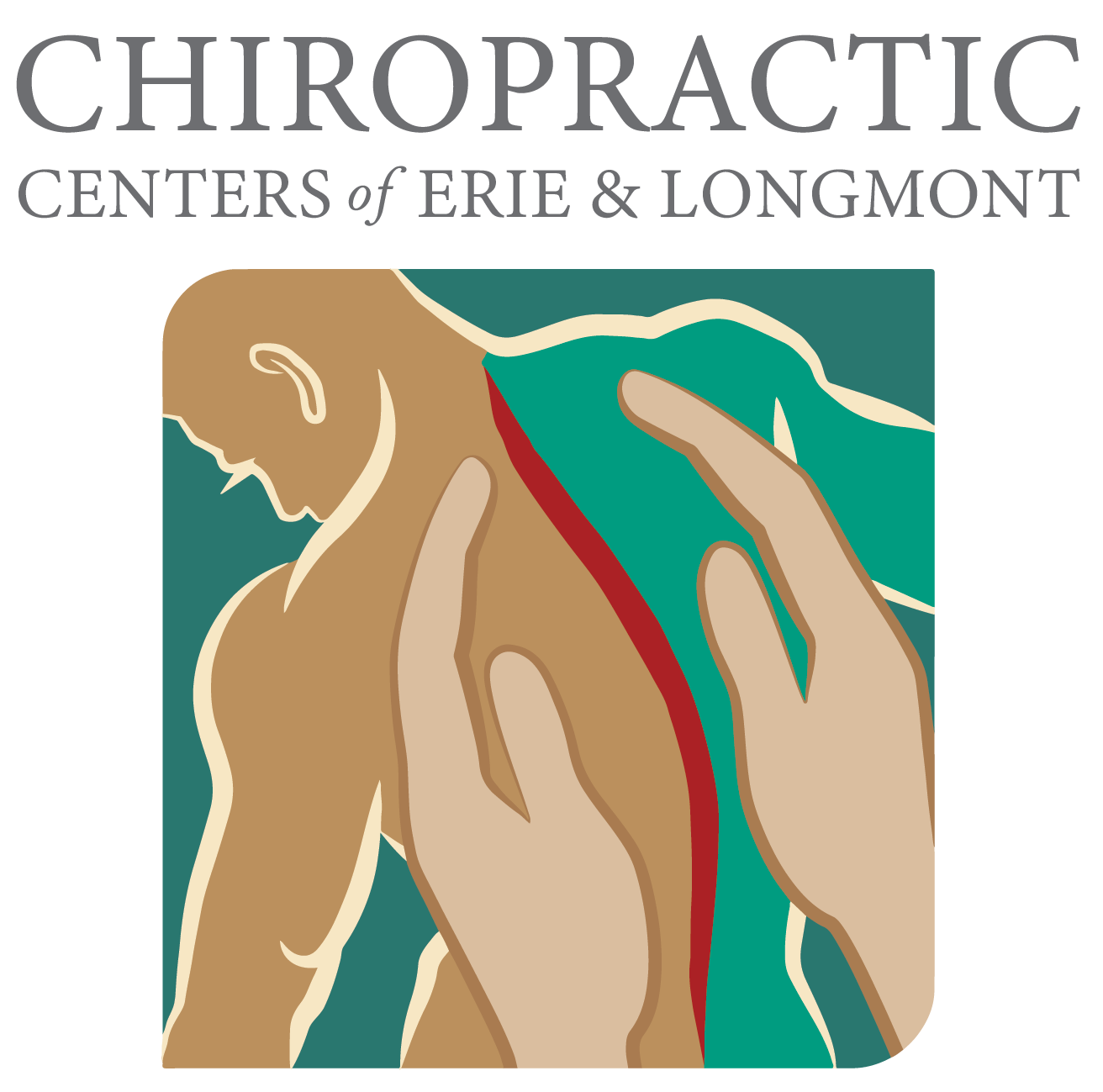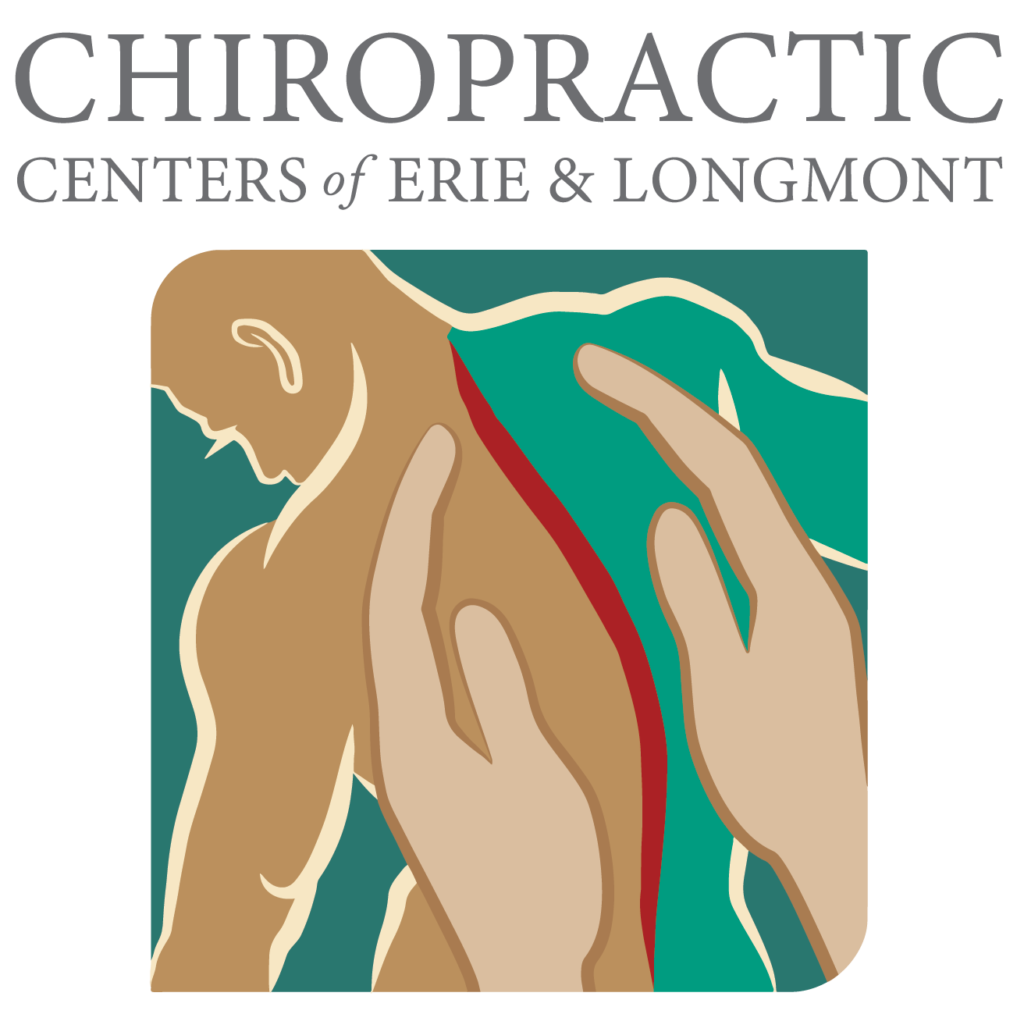Discover how chiropractic care offers lasting relief from tension headaches and migraines

Headaches are a real pain, aren’t they? If you’ve ever dealt with a throbbing tension headache or the debilitating intensity of a migraine, you know just how much they can disrupt your life. For many, the first instinct is to reach for a pill, hoping for quick relief. But what if there was a way to address the root cause of your head pain, offering long-term relief without relying just on medication? That’s where chiropractic care comes in.
At Chiropractic Center of Erie & Longmont, CO, we’ve been helping the Front Range community find natural relief for over 29 years. We’re proud to have been voted “Best of the West” 11 times, a testament to our commitment to providing the highest quality care to thousands of patients just like you. Our experienced team understands the complexities of headaches and migraines, and we’re here to show you how chiropractic treatment for headaches can make a real difference.
Understanding the Difference: Tension Headaches vs. Migraines
Before we dive into how chiropractic can help, let’s clear up the difference between two of the most common types of headaches: tension headaches and migraines. While both can cause significant discomfort, they have distinct characteristics.
Tension Headaches: These are by far the most common type of headache. They often feel like a constant, dull ache or pressure around your forehead, temples, or the back of your head and neck. Imagine a tight band squeezing your head – that’s often how people describe them. They can be triggered by stress, fatigue, poor posture, or even clenching your jaw. While uncomfortable, they typically don’t involve other symptoms like nausea or sensitivity to light and sound, which are hallmarks of migraines.
Migraines: Migraines are a whole different beast. They are much more severe and debilitating than tension headaches. A migraine attack often involves intense, throbbing pain, usually on one side of the head, though it can affect both. What sets migraines apart are the additional symptoms that often accompany the pain. These can include nausea, vomiting, extreme sensitivity to light (photophobia), sound (phonophobia), and even smells. Some people also experience an “aura” before a migraine, which might involve visual disturbances like flashing lights or zigzag lines. Migraines can last for hours or even days, significantly impacting your ability to function.
While their symptoms differ, both tension headaches and migraines often share a common thread: their origin can be linked to issues within your spine and nervous system.
How Spinal Misalignments Contribute to Head Pain

You might be wondering, “How does my spine relate to my head pain?” It’s a great question, and the answer lies in the intricate connection between your spine, your nervous system, and the muscles and tissues in your neck and head.
Your spine is like the superhighway for your nervous system. Your brain sends messages down your spinal cord, and these messages then travel through nerves to every part of your body. When everything is aligned and functioning correctly, these messages flow smoothly.
However, sometimes the vertebrae (the bones that make up your spine) can become slightly misaligned. These misalignments are called subluxations. In the neck, or cervical spine, even small subluxations can have a big impact.
Here’s how they can contribute to your headaches:
- Nerve Irritation: When vertebrae are out of alignment, they can put pressure on the delicate nerves that exit the spinal cord. In your neck, some of these nerves travel up into your head and face. Irritation of these nerves can lead to pain signals being sent to your brain, resulting in headaches. This is particularly true for nerves in the upper cervical (neck) spine, which are closely linked to headache pathways.
- Muscle Tension: Misalignments in your neck often lead to increased tension in the surrounding muscles. Think about the muscles at the base of your skull or those that run up your neck and into your shoulders. When these muscles are constantly tight and strained, they can pull on connective tissues and put pressure on nerves, contributing directly to tension headaches and even triggering migraines in susceptible individuals. This is often why people experience headache and neck pain relief together after chiropractic care.
- Restricted Blood Flow: Proper alignment of your neck can also impact blood flow to and from your head. While less common as a direct cause, some studies suggest that certain spinal issues can affect the vertebral arteries, which supply blood to parts of the brain. Any disruption in this flow could potentially play a role in headache development.
- Poor Posture: Often, spinal misalignments are linked to poor posture, especially in our modern world of smartphones and desk jobs. “Forward head posture,” where your head juts forward, puts immense strain on your neck and upper back muscles. This chronic strain can directly lead to tension headaches chiropractor visits may become necessary.
Understanding these connections is key to realizing why a spinal adjustment for migraines and tension headaches isn’t just about “cracking your back” – it’s about restoring proper function to a critical part of your body.
The Role of Chiropractic Adjustments in Headache Relief
So, if spinal misalignments are a common culprit, how do chiropractors help? The core of chiropractic treatment for headaches lies in precise, gentle spinal adjustments.
A chiropractor’s goal is to identify and correct those subluxations in your spine. By applying controlled force to specific vertebrae, they work to restore proper alignment and movement to your spinal joints. This isn’t a random process; it’s based on a thorough examination, including your health history, a physical exam, and sometimes X-rays, to pinpoint the exact areas needing attention.
Here’s how spinal adjustments contribute to headache and migraine relief:
- Reducing Nerve Irritation: When a chiropractor corrects a subluxation, it takes pressure off irritated nerves. This allows the nerves to function more freely, reducing the painful signals they send to your brain. For those suffering from chronic headaches, this can lead to a significant decrease in headache frequency and intensity.
- Releasing Muscle Tension: As spinal alignment improves, the surrounding muscles can finally relax. Imagine a knot that’s been tight for years finally loosening up. This release of tension in the neck and upper back muscles is incredibly effective for relieving tension headaches and can also reduce the muscular triggers associated with migraines.
- Improving Spinal Mobility: Proper spinal movement is essential for overall health. Adjustments help restore the natural range of motion in your neck and spine. When your spine moves freely, it reduces stiffness and helps prevent the buildup of tension that can lead to headaches.
- Enhancing Nervous System Function: Chiropractic care is about more than just pain relief; it’s about optimizing the function of your entire nervous system. By removing interference caused by subluxations, your nervous system can communicate more effectively throughout your body. This can lead to a more balanced response to stress and a greater ability for your body to heal itself, contributing to holistic headache treatment.
For many, opting for a chiropractor for migraine headaches or chronic tension headaches provides non-medication headache relief that addresses the underlying problem rather than just masking the symptoms. It’s a natural headache treatment approach that empowers your body’s own healing capabilities.
Benefits of Chiropractic Care for Chronic Headache Sufferers

If you’re someone who experiences chronic headaches or migraines, you know how frustrating it can be to constantly rely on medication, often with limited success or unwanted side effects. Chiropractic care offers a compelling alternative or complement to traditional approaches, providing a range of benefits for long-term relief:
- Reduced Frequency and Intensity of Headaches: This is often the most significant and immediate benefit reported by patients. By addressing spinal misalignments and nerve irritation, chiropractic care can lead to fewer headaches and, when they do occur, they are often less severe and shorter in duration.
- Decreased Reliance on Medication: Imagine not having to reach for pain relievers every time your head starts to throb. Chiropractic treatment aims to get to the root cause, potentially reducing or eliminating your need for constant over-the-counter or prescription headache medications. This means fewer side effects and a more natural approach to managing your pain.
- Improved Quality of Life: Chronic headaches can steal your joy, productivity, and ability to engage in daily activities. When headaches become less frequent and less intense, your overall quality of life dramatically improves. You can enjoy time with family, focus on work, and participate in hobbies without the constant fear of an impending headache.
- Non-Invasive and Drug-Free: For those seeking non-medication headache relief, chiropractic care is an ideal choice. It’s a natural, hands-on approach that doesn’t involve surgery, injections, or pharmaceuticals, making it a safe option for many.
- Addresses Underlying Causes: Unlike simply treating symptoms, chiropractic care focuses on identifying and correcting the underlying structural and neurological issues contributing to your headaches. This holistic approach means you’re not just getting temporary relief, but potentially preventing future headaches.
- Better Posture and Spinal Health: As a positive side effect of headache treatment, chiropractic care often leads to improved overall posture and better spinal health. When your spine is aligned, your entire body functions more efficiently.
- Personalized Care Plans: At Chiropractic Center of Erie & Longmont, CO, we don’t believe in one-size-fits-all solutions. Each patient receives a personalized care plan tailored to their specific type of headache, overall health, and individual needs. This customized approach maximizes the effectiveness of treatment.
Choosing chiropractic for migraine relief or chronic tension headaches means choosing a path towards lasting comfort and well-being.
Lifestyle and Postural Tips to Prevent Recurring Headaches
While chiropractic adjustments are incredibly effective, integrating healthy lifestyle and postural habits can significantly enhance your results and help prevent headaches from returning. Think of it as teamwork: your chiropractor does their part, and you do yours!
Here are some practical tips you can incorporate into your daily routine:
- Mind Your Posture: This is huge! Poor posture, especially “tech neck” from looking down at devices, puts immense strain on your neck and upper back.
- At your desk: Make sure your computer screen is at eye level. Keep your feet flat on the floor and your back supported. Avoid slouching.
- On your phone: Bring your phone up to eye level instead of bending your head down.
- Standing: Imagine a string pulling you up from the top of your head. Keep your shoulders relaxed and back.
- Stay Hydrated: Dehydration is a surprisingly common trigger for headaches. Make sure you’re drinking plenty of water throughout the day. Keep a water bottle handy as a reminder.
- Manage Stress: Stress is a major culprit for tension headaches and can even trigger migraines. Find healthy ways to cope:
- Deep breathing exercises: Just a few minutes of focused breathing can calm your nervous system.
- Meditation: This practice is excellent for stress reduction and improving body awareness.
- Spend time in nature: A walk outside can do wonders for your mental state.
- Regular Exercise: Moderate exercise can help reduce stress, improve circulation, and strengthen muscles that support your spine. Just be mindful of high-impact activities if they seem to trigger your headaches.
- Prioritize Sleep: Lack of sleep or irregular sleep patterns can trigger headaches. Aim for 7-9 hours of quality sleep each night. Create a relaxing bedtime routine and ensure your sleeping environment is dark, quiet, and cool.
- Ergonomic Pillow and Mattress: Your sleep setup can significantly impact your neck and spinal alignment. Invest in a pillow that supports the natural curve of your neck and a mattress that provides adequate support for your spine.
- Take Frequent Breaks: If you have a job that requires long periods of sitting or repetitive motions, take short breaks every 30-60 minutes. Stand up, stretch, and move around to prevent stiffness and muscle tension from building up.
- Stretching and Mobility: Gentle stretches for your neck and shoulders can help relieve tension. Your chiropractor can recommend specific stretches that are beneficial for your condition.
- Limit Caffeine and Alcohol (if they’re triggers): For some individuals, excessive caffeine or alcohol consumption can trigger headaches. Pay attention to your body and moderate intake if you notice a correlation.
By incorporating these simple yet powerful habits alongside your chiropractic care, you’ll be taking an active role in your own healing journey, supporting long-term headache and neck pain relief, and moving towards a healthier, pain-free life.
Conclusion: Experience Lasting Relief Through Personalized Chiropractic Care
Living with tension headaches or migraines doesn’t have to be your norm. While these conditions can be incredibly disruptive, there is a natural, effective path to lasting relief. Chiropractic care offers a unique approach by addressing the underlying structural and neurological issues that often contribute to headaches, rather than just masking the symptoms.
At Chiropractic Center of Erie & Longmont, CO, we are dedicated to helping you reclaim your life from the grip of headaches. For over 29 years, our experienced team has provided the highest quality, personalized care to thousands of patients in Erie & Longmont, CO, earning us the “Best of the West” award 11 times. We believe in empowering your body’s natural healing abilities through precise spinal adjustments and comprehensive care.
If you’re tired of relying just on medication and are ready to explore a holistic headache treatment that focuses on long-term well-being, we invite you to discover the difference chiropractic care can make. Experience non-medication headache relief, better spinal health, and an improved quality of life.
Don’t let headaches control your day any longer. Contact Chiropractic Center of Erie & Longmont, CO, today at 303-828-3000 or reach our Facebook page to schedule your consultation and take the first step towards a pain-free future. Your journey to natural headache relief starts here.
Frequently Asked Questions
What types of headaches can chiropractic treatment help with?
Chiropractic treatment is highly effective for a variety of headaches, particularly tension headaches and migraines. By focusing on spinal alignment and nerve function, chiropractic care helps address the root causes of pain often linked to neck tension, poor posture, and nerve irritation, offering significant relief from chronic headache symptoms.
How do spinal adjustments provide migraine and headache relief?
Spinal adjustments work by correcting misalignments (subluxations) in the neck and spine. These misalignments can irritate nerves and cause muscle tension, leading to headaches. By restoring proper alignment, chiropractors reduce nerve pressure, relax tense muscles, and improve blood flow, which can significantly decrease the frequency and intensity of both tension headaches and migraines, providing non-medication headache relief.
Is chiropractic care a safe and natural headache treatment option?
Yes, chiropractic care is a safe, non-invasive, and drug-free approach to natural headache treatment. Unlike pain medications that only mask symptoms, chiropractic focuses on empowering your body’s natural healing processes. Our experienced team at Chiropractic Center of Erie & Longmont, CO, uses gentle, precise techniques to provide holistic headache treatment without adverse side effects.
How long does it take to get relief from chronic headaches with a chiropractor?
The timeline for relief varies for each individual, depending on the severity and duration of their chronic headaches. Some patients experience immediate improvement after their first few spinal adjustments, while others may require a more extended course of care to achieve lasting headache and neck pain relief. During your initial consultation, we’ll develop a personalized plan tailored to your specific needs and goals.
Can a chiropractor help prevent recurring headaches?
Absolutely. Beyond providing immediate relief, a primary goal of chiropractic care is to help prevent recurring headaches. By correcting underlying spinal issues, improving posture, and providing lifestyle advice, a tension headache chiropractor helps reduce the frequency of headache episodes. Our holistic approach aims to address triggers and strengthen your body’s ability to maintain optimal health.
Why choose Chiropractic Center of Erie & Longmont, CO, for headache and migraine care?
At Chiropractic Center of Erie & Longmont, CO, we offer unparalleled experience and trusted care. Voted “Best of the West” 11 times, our clinic has proudly served the Front Range community for over 29 years, helping thousands achieve lasting relief from headaches and migraines. We provide personalized chiropractic treatment for headaches in a friendly and professional environment, ensuring you receive the best chiropractic care tailored to your unique needs.







